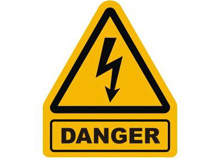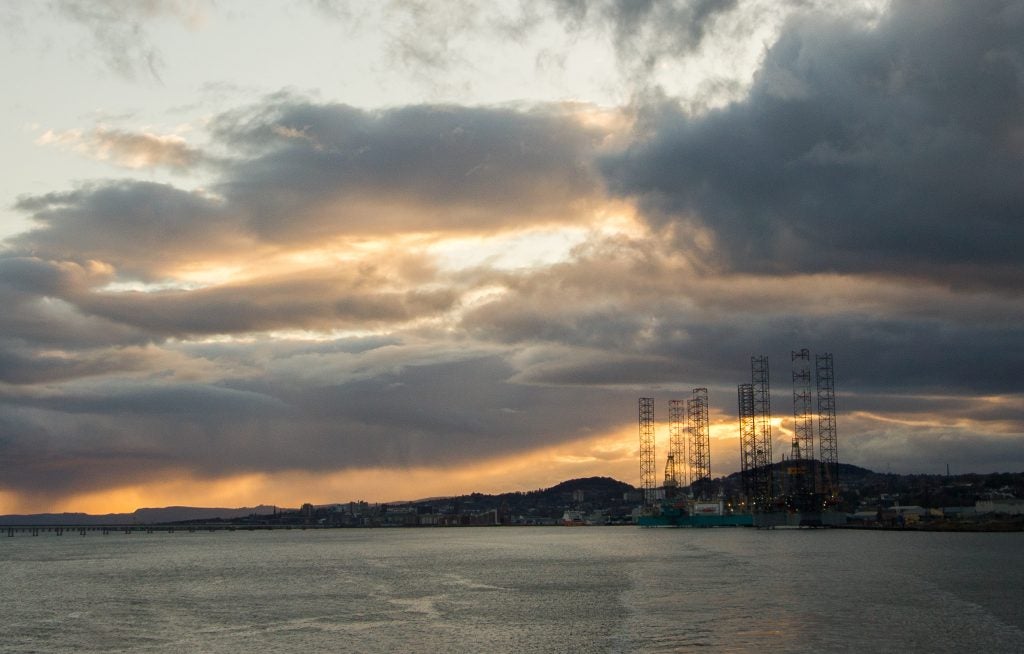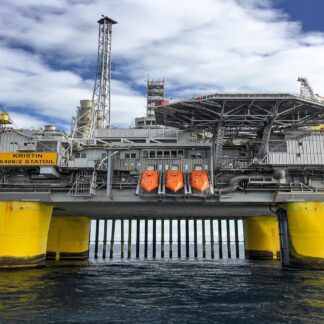
Safety is paramount to the successful operation of any oil or gas facility, given the potentially hazardous nature of operations and the cost of any disruption caused by failure to apply the correct standards. From commercial, operational and ethical standpoints, it pays to invest in safety. Exploration and production (E&P) companies are working hard to ensure that the industry’s high standards of safety are met, though to measure the effect on a global or even national level can be difficult.
“It is hard to measure the response of the industry to safety,”; says Magne Ognedal, director of the Petroleum Safety Authority Norway. “In Norway, it is very difficult to relate land-based operations to offshore operations as there are different statistics involved. In general, the industry has health and safety high on the agenda, nationally and internationally. There is serious work being done on specific issues.”
Ognedal has a reputation as Norway’s guru on safety and is also widely respected outside his home country, so when he flags up challenges that the oil and gas industry must urgently address, it pays to listen to his concerns.
“There is a lot to do and there are many opportunities to improve safety in the industry,” he claims. “The biggest challenge is to get technical and organisational integrity in operations.”
He believes the most pressing of these hurdles is organisational integrity: the ability of a company to ensure that it has people with the right skills to oversee safety issues. This is something that will be increasingly hard to achieve in the years ahead.
See Also:
Safety skills have become scarce commodities, but unlike the oil and gas the industry seeks, there are no reserves waiting to be found. Training, skills and experience cannot be discovered; they must be created.
How well do you really know your competitors?
Access the most comprehensive Company Profiles on the market, powered by GlobalData. Save hours of research. Gain competitive edge.

Thank you!
Your download email will arrive shortly
Not ready to buy yet? Download a free sample
We are confident about the unique quality of our Company Profiles. However, we want you to make the most beneficial decision for your business, so we offer a free sample that you can download by submitting the below form
By GlobalDataThe industry not only has rights, but also responsibilities, stresses Ognedal. If companies cannot ensure the right level of competence in safety matters, then projects must be postponed – with potentially severe financial consequences.
Already he has put this doctrine into action, having prevented projects in Norway from proceeding until they meet the required safety standard.
“The organisations running the activity in question must have the competency and the capacity to perform safely,” says Ognedal. “There is a market today for professional people with the right skills. Compared with the level of industry activity, there is a shortage of skilled people, and the availability of safety competence is being stretched. If you are starting up a new drilling rig, where are you going to get these people from? New rigs are coming out of yards now while
the industry looks worldwide for the right people, but it takes education, training and experience. These people must be in place if a rig is to operate prudently and safely, but it will take years before there is sufficient capacity of qualified people available.”
No quick fix
One of the main challenges is the length of time it takes to train people in the appropriate safety skills – and the fact that there is no quick way to buy experience. Ognedal is urging the industry to start addressing the problem now.
If operations are today being refused permission because of a lack of safety expertise, then E&P companies should expect the problem to be worse in the future.
“There is no easy solution,” says Ognedal. “Companies must have the necessary competence and capacity, and that means everyone from the oil company to their contractors. Companies are trying to be creative in their attempts to resolve this issue for their own activities, but in Norway people with the relevant safety skills often have to rotate between postings.”
If skills remain in short supply, he fears that one problem just beginning to emerge will worsen exponentially – the cost of safety expertise. Ognedal has already noticed that oil and gas companies are starting to outbid each other for skilled safety personnel.
If this continues then the cost of that specialised labour will start to spiral upwards. While this might draw more young people towards training in the relevant skills with the promise of lucrative rewards, the main fear is that it will be yet another element in rising production costs.
“After all, it is hard to reduce salary levels once they have gone up,” he observes, stressing that the education of the next generation of safety experts is an industry-wide issue.
Attracting people to study the right courses at university is a long-term challenge, especially as interest in these areas has been low in recent years. Norway is among many countries where the study of engineering, geology and other key subjects has been low.
Although there are some signs of growing interest, Ognedal still anticipates a shortfall in skills that will worsen before it improves. In Norway, there are many ongoing programmes to promote job opportunities within the industry, and information campaigns at universities seem to be having some success, but the results are not yet clear.
“The real challenge is whether we can look worldwide for the right people to train,’ says Ognedal. ‘Even if we find these people it will take time, so there is no quick fix to the problem.”
Tackling technical problems
The industry cannot focus solely on the skills issue: technical challenges are also emerging. With new operations, the technical issues are perhaps more straightforward as they require the physical infrastructure to meet the required standards.
The concrete and steel must be sound, the right safety systems must be in place and functions such as firefighting and emergency shutdown procedures must work effectively. The testing mechanisms and standards are clear for new operations.
The problem is with the growing trend towards extending the life of physical assets.
E&P companies invest heavily in their wells, rigs, pipelines and processing facilities, and they are eager to maximise their return.
As global demand for resources grows and the industry endeavours to exploit reserves more fully and more efficiently, life extension has become a priority for many operations.
“As a starting point, we say that a facility has a design life of 25 years, and for that period the operator has an obligation to maintain it and ensure that it is in good shape,” notes Ognedal. “When companies want to extend its use for another ten years
or more, then there is a risk. The challenge is to demonstrate to us that it is safe to do so.”
For now, the difficulty is that there is no standard in place.
The authorities must ensure that the testing procedure is economically viable and not so complex as to delay or disrupt production plans. There must, of course, be no compromise on quality.
The challenge is to balance rigour with practicality.
The Petroleum Safety Authority Norway has been working alongside the industry to develop a safety testing procedure for life extension programmes, its observer status ensuring that it can approve any guidelines quickly.
“The structures for a review are not in place yet, but they are coming soon,’ Ognedal says. ‘The industry has developed a guidance document outlining how it should be done. There will be a described process for the Norwegian industry, but other countries will be able to use it. We have addressed lifetime extension for some offshore facilities – after lots of work by ourselves and the companies involved – so that each country does not have to develop its own programme. It is a standardisation process. There will be a guide, which can then be translated to suit each specific operation.”
Technical and operational integrity
The priority for Petroleum Safety Authority Norway is technical and operational efficiency. Through 2007, it implemented a major project to examine the extension of production life. The project’s main deliverables are:
- An investigation of the impact of aging materials and structures on safety.
- Tests on structures removed from the Norwegian Continental Shelf.
- Draft guidelines on applications for consent to extend production life.
- A Norsok standard from the Norwegian Oil Industry Association for life extension projects.
The Norsok standard is currently being finalised, and could serve as the basis for international guidelines.
Clear mindset
Whether its focus is on the long-term challenge of skills or the short-term technical issues, the most important step the industry can take is to re-evaluate its attitude towards safety in general, says Ognedal. He perceives that in Norway, as in many regions, the oil and gas industry views compliance as an obligation rather than an opportunity, but he urges companies to see it as just the starting point.
For example, linking the safety agenda to environmental issues can reveal opportunities for efficiency gains that bring commercial benefit.
“The industry needs to better take on board that good safety management is a positive thing,” he says. “Safety, technical integrity and avoiding harm to the external environment mean that there are likely to be no leaking pipes. That is good for business.”
Achieving this change in mindset is a challenge. It requires the involvement of senior management at E&P companies to push the issue of safety forward, particularly in the context of environmental policy.
However, engagement at this level is unlikely unless senior executives have a clear view of safety issues within their own company. Ognedal believes that it is important to develop a set of relevant key performance indicators (KPIs) that will support decision-making processes and highlight the importance of safety to a company’s performance.
“You need to look at more than just personnel injury statistics,’ says Ognedal. ‘It is a struggle to get top management involved and bring together the information needed for a company to react. There are no standard sets of KPIs yet in Norway. Oil and gas producers have worked on the issue a bit, but their KPIs vary with each operation. Senior management needs a clear policy, with goals such as eliminating any backlog in maintenance on critical safety equipment. Then it can identify the KPIs it needs to deliver on such policies.”
His advice is that companies at least get a clear picture of where they are in regard to safety policies and procedures by harvesting the vast amount of data available to them. From this detailed view, a company can plot a course towards greater efficiency and take a proactive approach to safety.
Time is of the essence and Ognedal is sounding the call for immediate action. The industry would do well to heed his warning.






